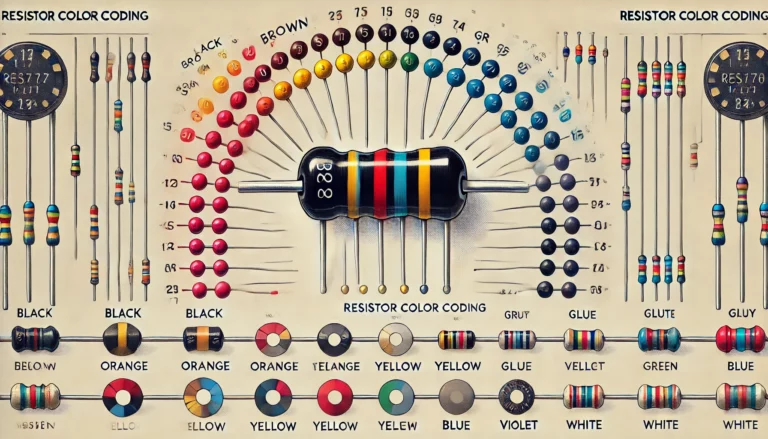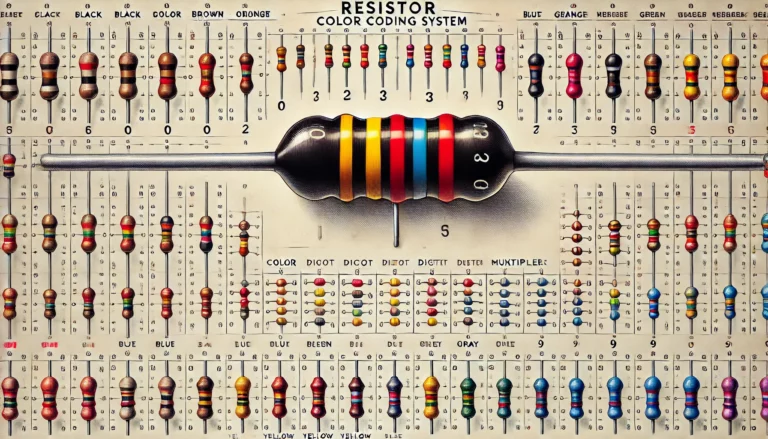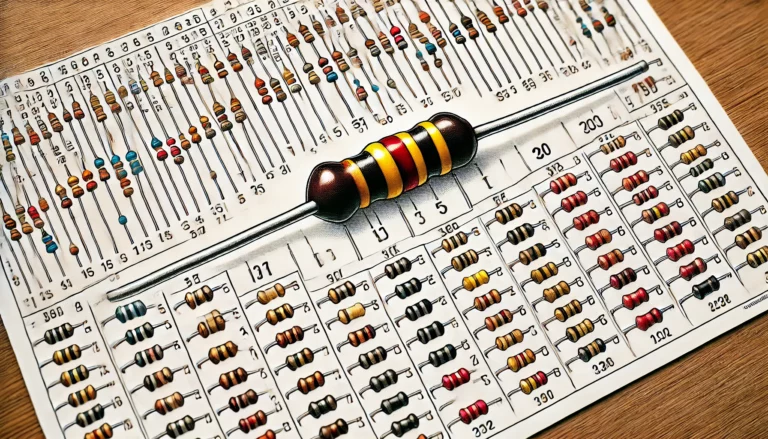Mastering the Spectrum: Unlock the Secrets of Resistor Color Codes
In the electrifying world of electronics, understanding the language of components is crucial for enthusiasts and professionals alike. Among these components, resistors stand out with their rainbow of bands, each color whispering secrets about their resistance values. In this comprehensive guide, we’ll demystify the resistor color codes, transforming what may seem like a daunting task into a simple, color-filled journey. Welcome to “Mastering the Spectrum: Unlock the Secrets of Resistor Color Codes.”

The Basics of Resistor Color Codes
Resistors are pivotal in managing the flow of electrical current in a circuit. The color bands on a resistor reveal its resistance value, tolerance, and sometimes even its reliability or temperature coefficient. Typically, a resistor will have four, five, or six bands, each color representing a specific digit, multiplier, or tolerance level.
Deciphering the 4-Band Color Code
The 4-band color code is the most commonly encountered system. The first two bands indicate the first and second significant digits of the resistor’s value. The third band is the multiplier, determining how many zeros follow the first two digits. The fourth band denotes the tolerance, or the precision of the resistor’s value.
Navigating the 5-Band and 6-Band Codes
For precision resistors, a 5-band or 6-band color code might be used. These include an additional significant digit and, in the case of the 6-band code, a temperature coefficient band. This allows for more precise specifications, essential in sensitive applications.
Color Code Chart and Reading Techniques
A color code chart is an indispensable tool for interpreting these bands. Starting with black (0) and moving through the spectrum to white (9), each color has a corresponding digit. Additional colors like gold, silver, and none (for no band) represent different tolerance and multiplier values. We’ll walk you through a step-by-step process to read these codes accurately, ensuring you can quickly identify the value of any resistor you encounter.
Practical Tips and Common Mistakes
While reading resistor color codes might seem straightforward, it’s easy to make mistakes. We’ll share practical tips to avoid common pitfalls, such as mixing up the multiplier and tolerance bands or reading the resistor from the wrong end.
Advanced Applications and Real-World Examples
To solidify your understanding, we’ll explore advanced applications of resistor color codes in real-world electronics projects. From designing simple circuits to troubleshooting complex systems, knowing how to quickly and accurately determine resistor values is an invaluable skill.
Conclusion
Resistor color codes are a fundamental aspect of electronics, serving as a universal language for identifying resistor values. With the knowledge from this guide, you’ll be equipped to confidently navigate this colorful aspect of electronics, enhancing your projects and expanding your skills.
Interactive Quiz and Further Resources
To test your knowledge and ensure you’ve mastered resistor color codes, we’ve included an interactive quiz at the end of the article. Additionally, you’ll find further resources to deepen your understanding, including online calculators, mobile apps, and hands-on project ideas.




